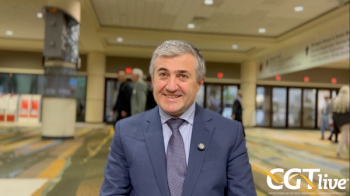
Robotic Surgery Is Useful Option for Oral Cancer
Minimally invasive transoral robotic surgery, used alone or combined with adjuvant therapy, provides good functional and oncologic outcomes in patients with oropharyngeal squamous cell carcinoma.
Minimally invasive transoral robotic surgery (TORS), used alone or combined with adjuvant therapy, provides good functional and oncologic outcomes in patients with oropharyngeal squamous cell carcinoma (OPSCC), new research suggests.
The results were especially impressive in patients with human papillomavirus (HPV) infection, which is currently the most common cause of OPSCC in Europe and the United States.
Eric J. Moore, MD, associate professor of Otolaryngology at the Mayo Clinic in Rochester, Minnesota, and coauthors reviewed a prospective database of patients with previously untreated OPSCC arising in the tonsil or base of the tongue who underwent TORS at their institution during a recent 2-year period.
In 2011, about 12,000 individuals in the United States were diagnosed with OPSCC, according to the authors. The most common sites are the tonsillar fossa and base of the tongue. Customarily, OPSCC has been treated with combined modality therapy, including open surgical resection through mandibulotomy, neck dissection, and adjuvant radiation therapy or combined chemotherapy and radiation therapy. TORS was later introduced to improve access to these tumors.
Functional outcomes of the study included gastrostomy tube dependence and tracheostomy dependence. Oncologic outcomes included local, regional, and distant control and disease-specific and recurrence-free survival.
Overall, 66 patients who underwent TORS as their primary treatment were followed for a minimum of 2 years. Sixty-four patients, or 97%, were able to tolerate an oral diet and maintain their nutritional needs before initiating adjuvant therapy at 4 weeks. Only 3 patients, or 4.5%, required long-term gastrostomy tube use, and one (1.5%) had long-term tracheotomy.
Three-year recurrence-free survival was achieved in 92.4% of patients, and 95.5% were alive and disease-free at the latest assessment.
Importantly, the analysis also demonstrated a strong correlation between disease control and HPV status. The 3-year survival rate was 92% in protein 16 assay (p16)-positive patients versus 52% in p16-negative patients. Most patients in the study had HPV-associated OPSCC.
The authors cited numerous advantages of TORS as primary therapy in OPSCC, including “the ability to stage the tumor adequately, to eradicate the primary tumor and the involved lymph nodes reliably and completely in a single setting, and to add adjuvant therapy in a rational and individually designed manner.” In addition, the ability to preserve normal tissue and neurovascular supply helps patients heal faster and recover oropharyngeal function.
“
The authors cited numerous advantages of TORS as primary therapy in OPSCC.”
The authors said that the major study limitation was the lack of an alternative treatment group for comparative analysis. Selection bias represented an additional drawback, given that patients with higher T-stage tumors that cannot be exposed or resected using a transoral approach were ineligible for the study.
Moore EJ, Olsen SM, Laborde RR, et al. Long-term functional and oncologic results of transoral robotic surgery for oropharyngeal squamous cell carcinoma. Mayo Clin Proc. 2012;87(3):219-225.
Newsletter
Stay at the forefront of cutting-edge science with CGT—your direct line to expert insights, breakthrough data, and real-time coverage of the latest advancements in cell and gene therapy.

















































